Synergy between Electric Vehicle Manufacturers and Battery Recyclers through Technology and Innovation: A Game Theory Approach
Abstract
:1. Introduction
2. Related Work
2.1. Innovation Network
2.2. Complex Network Evolutionary Game
3. Network Analysis of Technological Cooperation Innovation
3.1. Main Theoretical Foundations of Network Analysis
3.1.1. Small-World Effect
3.1.2. Network Structural Holes
3.2. Innovation Network Data
3.3. Overall Network Analysis
3.4. Analysis of Structural Holes
4. Evolutionary Game Analysis on Technological Cooperation Innovation
4.1. Evolutionary Game Model and Its Assumptions
4.2. Evolutionary Game Stable State
4.3. Evolutionary Game Results
5. Conclusions and Implications
Author Contributions
Funding
Institutional Review Board Statement
Informed Consent Statement
Data Availability Statement
Conflicts of Interest
Appendix A
| Rank | Institution | Degree Centrality | Middle Centrality | Network Size | Network Restriction |
|---|---|---|---|---|---|
| 1 | State Grid Corporation, Beijing, China | 24 | 250 | 22.333 | 0.105 |
| 2 | Zhejiang Geely Holding Group Co., Ltd., Hangzhou, China | 5 | 10 | 5 | 0.2 |
| 3 | China Electric Power Research Institute, Beijing, China | 5 | 2 | 2.6 | 0.594 |
| 4 | State Grid Jibei Electric Power Co., Ltd., Beijing, China | 5 | 2.5 | 3 | 0.588 |
| Electric Power Research Institute, Beijing, China | |||||
| 5 | Wanxiang Group, Hangzhou, China | 4 | 3.5 | 3 | 0.535 |
| 6 | Shandong Luneng Intelligent | 4 | 1.5 | 2.5 | 0.684 |
| Technology Co., Ltd., Jinan, China | |||||
| 7 | Xu Ji Electric Co., Ltd., Xuchang, China | 4 | 0 | 1 | 0.766 |
| 8 | Economic and Technical Research Institute of State Grid Jiangsu Electric Power Company, Nanjing, China | 4 | 0 | 1 | 0.766 |
Appendix B
Appendix C
References
- Loganathan, M.; Anandarajah, G.; Tan, C.; Msagati, T.A.; Das, B.; Hazarika, M. Review and selection of recycling technology for lithium-ion batteries made for EV application-A life cycle perspective. In Proceedings of the IOP Conference Series: Earth and Environmental Science, Osun State, Nigeria, 28 November–1 December 2022; IOP Publishing: Bristol, UK, 2022; Volume 1100, p. 012011. [Google Scholar]
- Wang, L.; Wang, X.; Yang, W. Optimal design of electric vehicle battery recycling network–From the perspective of electric vehicle manufacturers. Appl. Energy 2020, 275, 115328. [Google Scholar] [CrossRef]
- Heelan, J.; Gratz, E.; Zheng, Z.; Wang, Q.; Chen, M.; Apelian, D.; Wang, Y. Current and prospective Li-ion battery recycling and recovery processes. JOM 2016, 68, 2632–2638. [Google Scholar] [CrossRef]
- Loganathan, M.; Mishra, B.; Tan, C.M.; Kongsvik, T.; Rai, R. Multi-Criteria decision making (MCDM) for the selection of Li-Ion batteries used in electric vehicles (EVs). Mater. Today Proc. 2021, 41, 1073–1077. [Google Scholar] [CrossRef]
- Thompson, D.L.; Hartley, J.M.; Lambert, S.M.; Shiref, M.; Harper, G.D.; Kendrick, E.; Anderson, P.; Ryder, K.S.; Gaines, L.; Abbott, A.P. The importance of design in lithium ion battery recycling—A critical review. Green Chem. 2020, 22, 7585–7603. [Google Scholar] [CrossRef]
- Degbey, W.; Pelto, E. Cross-border M&A as a trigger for network change in the Russian bakery industry. J. Bus. Ind. Mark. 2013, 28, 178–189. [Google Scholar]
- Loganathan, M.; Tan, C.M.; Mishra, B.; Msagati, T.A.; Snyman, L.W. Review and selection of advanced battery technologies for post 2020 era electric vehicles. In Proceedings of the 2019 IEEE Transportation Electrification Conference (ITEC-India), Bengaluru, India, 17–19 December 2019; pp. 1–5. [Google Scholar]
- Zhang, C.; Liao, Q.; Lu, L.; Fei, P. Development Report of Lithium Battery Recycling Industry. High-Technol. Commer. 2019, 36–45. [Google Scholar]
- Wu, F.; Wang, H.; Lai, L. Research on Patent Competition Situation of New Energy Vehicle Power Battery Technology. Auto Ind. Res. 2020, 54–57. [Google Scholar]
- Li, S. Prosperity Crisis of China’s New Energy Automobile Industry-Based on Patent Analysis. Mark. Mod. 2014, 30, 256–259. [Google Scholar]
- Zhang, Y. Association Study on Policy and Technological Innovation—Take the Field of Electric Vehicle Power Battery as Example. China Invent. Pat. 2019, 16, 22–35. [Google Scholar]
- Mu, D.; Yang, J.; Li, X. The influence of enterprise cooperation within closed-loop supply chain on power battery recovery and recycling of new energy vehicles. Supply Chain. Manag. 2021, 1, 54–67. [Google Scholar]
- Sun, H.; Geng, Y.; Hu, L.; Shi, L.; Xu, T. Measuring China’s new energy vehicle patents: A social network analysis approach. Energy 2018, 153, 685–693. [Google Scholar] [CrossRef]
- Gu, X.; Ieromonachou, P.; Zhou, L.; Tseng, M.L. Developing pricing strategy to optimise total profits in an electric vehicle battery closed loop supply chain. J. Clean. Prod. 2018, 203, 376–385. [Google Scholar] [CrossRef]
- Glöser-Chahoud, S.; Huster, S.; Rosenberg, S.; Baazouzi, S.; Kiemel, S.; Singh, S.; Schneider, C.; Weeber, M.; Miehe, R.; Schultmann, F. Industrial disassembling as a key enabler of circular economy solutions for obsolete electric vehicle battery systems. Resour. Conserv. Recycl. 2021, 174, 105735. [Google Scholar] [CrossRef]
- Kannan, G.; Sasikumar, P.; Devika, K. A genetic algorithm approach for solving a closed loop supply chain model: A case of battery recycling. Appl. Math. Model. 2010, 34, 655–670. [Google Scholar] [CrossRef]
- Li, L.; Dababneh, F.; Zhao, J. Cost-effective supply chain for electric vehicle battery remanufacturing. Appl. Energy 2018, 226, 277–286. [Google Scholar] [CrossRef]
- Liu, S.; Gong, D. Modelling and simulation on recycling of electric vehicle batteries–using agent approach. Int. J. Simul. Model. 2014, 13, 79–92. [Google Scholar] [CrossRef]
- Li, X.; Mu, D.; Du, J.; Cao, J.; Zhao, F. Game-based system dynamics simulation of deposit-refund scheme for electric vehicle battery recycling in China. Resour. Conserv. Recycl. 2020, 157, 104788. [Google Scholar] [CrossRef]
- Shi, X.; Jing, R.; Hou, G.M.; Wang, J.P. Network position advantage and technological innovation of China’s new energy vehicle based on the perspective of network theory. Sustainability 2019, 11, 2098. [Google Scholar] [CrossRef]
- Tang, Y.; Zhang, Q.; Li, Y.; Li, H.; Pan, X.; Mclellan, B. The social-economic-environmental impacts of recycling retired EV batteries under reward-penalty mechanism. Appl. Energy 2019, 251, 113313. [Google Scholar] [CrossRef]
- Zhao, D.; Ji, S.F.; Wang, H.P.; Jiang, L.W. How do government subsidies promote new energy vehicle diffusion in the complex network context? A three-stage evolutionary game model. Energy 2021, 230, 120899. [Google Scholar] [CrossRef] [PubMed]
- Zhu, Q.H.; Dou, Y.J. Evolutionary game model between governments and core enterprises in greening supply chains. Syst. Eng.-Theory Pract. 2007, 27, 85–89. [Google Scholar] [CrossRef]
- Li, X.; Mu, D.; Du, J. Multi-channel recycling decisions of electric vehicle battery based on SD-dynamic game model. In Proceedings of the 2018 15th International Conference on Service Systems and Service Management (ICSSSM), Hangzhou, China, 21–22 July 2018; pp. 1–6. [Google Scholar]
- Wang, C.; Liu, J. Evolutionary game analysis of recycling management of waste power batteries of new energy vehicles. In Proceedings of the IOP Conference Series: Earth and Environmental Science, Chengdu, China, 23–25 April 2021; IOP Publishing: Bristol, UK, 2021; Volume 766, p. 012077. [Google Scholar]
- Watts, D.J.; Strogatz, S.H. Collective dynamics of ‘small-world’ networks. Nature 1998, 393, 440–442. [Google Scholar] [CrossRef] [PubMed]
- Watts, D.J. Networks, dynamics, and the small-world phenomenon. Am. J. Sociol. 1999, 105, 493–527. [Google Scholar] [CrossRef]
- Burt, R.S. Structural Holes: The Social Structure of Competition; Harvard University Press: Cambridge, MA, USA, 1995. [Google Scholar]
- Wang, R.; Lv, Y.; Duan, M. Evolutionary game of inter-firm knowledge sharing in innovation cluster. Evol. Syst. 2017, 8, 121–133. [Google Scholar] [CrossRef]
- Smith, J.M.; Price, G.R. The logic of animal conflict. Nature 1973, 246, 15–18. [Google Scholar] [CrossRef]
- Taylor, P.D.; Jonker, L.B. Evolutionary stable strategies and game dynamics. Math. Biosci. 1978, 40, 145–156. [Google Scholar] [CrossRef]

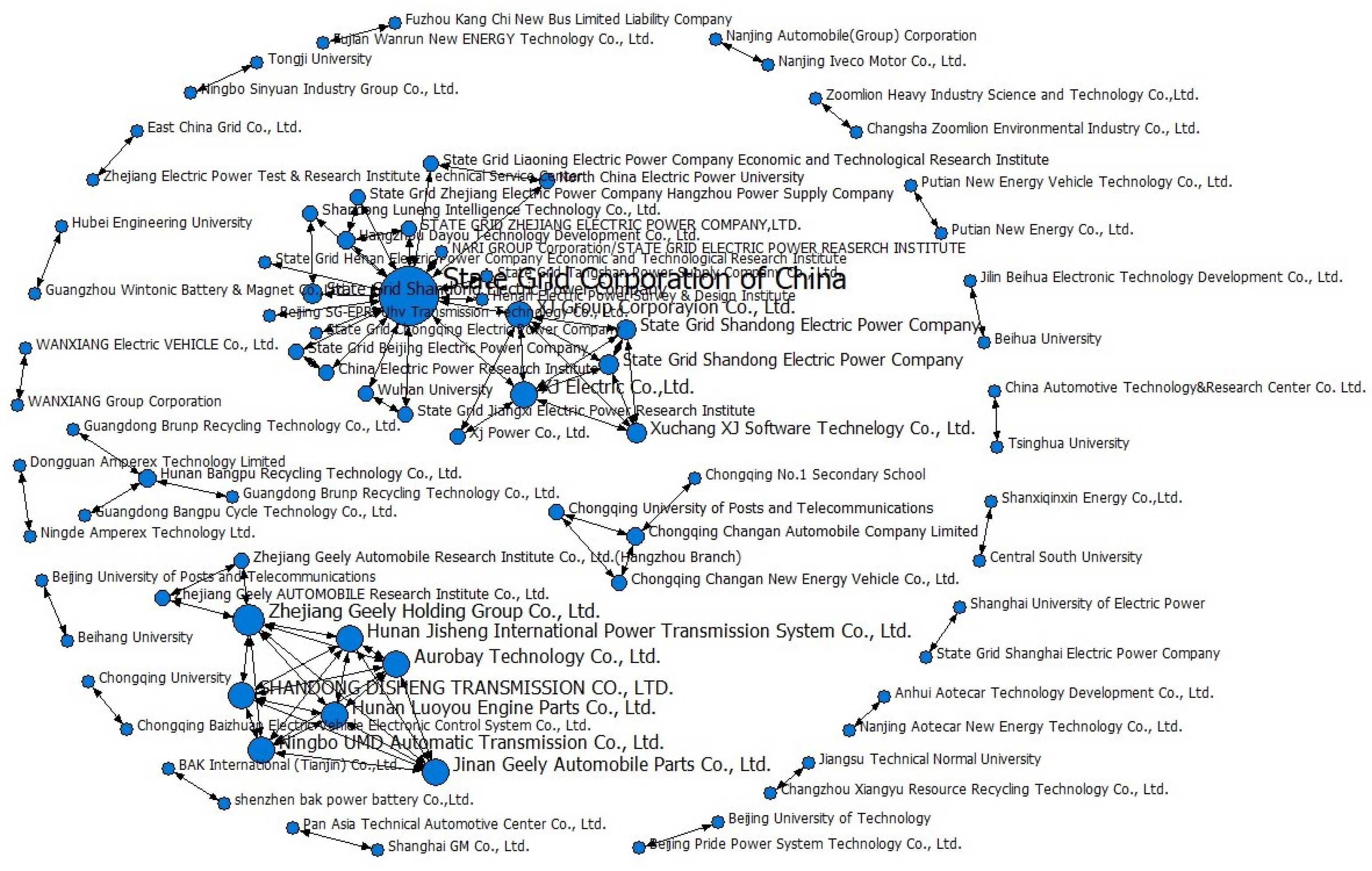
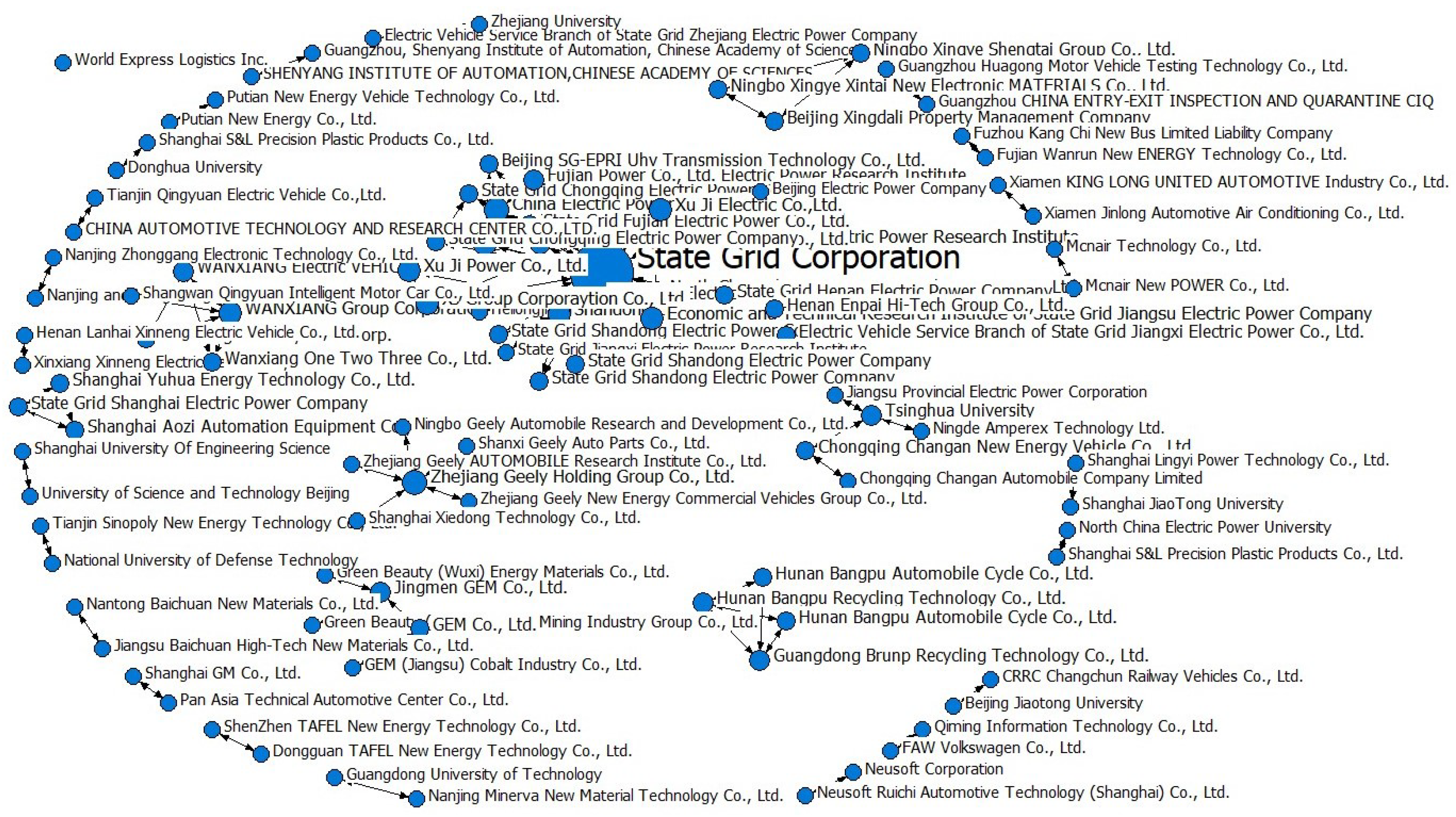
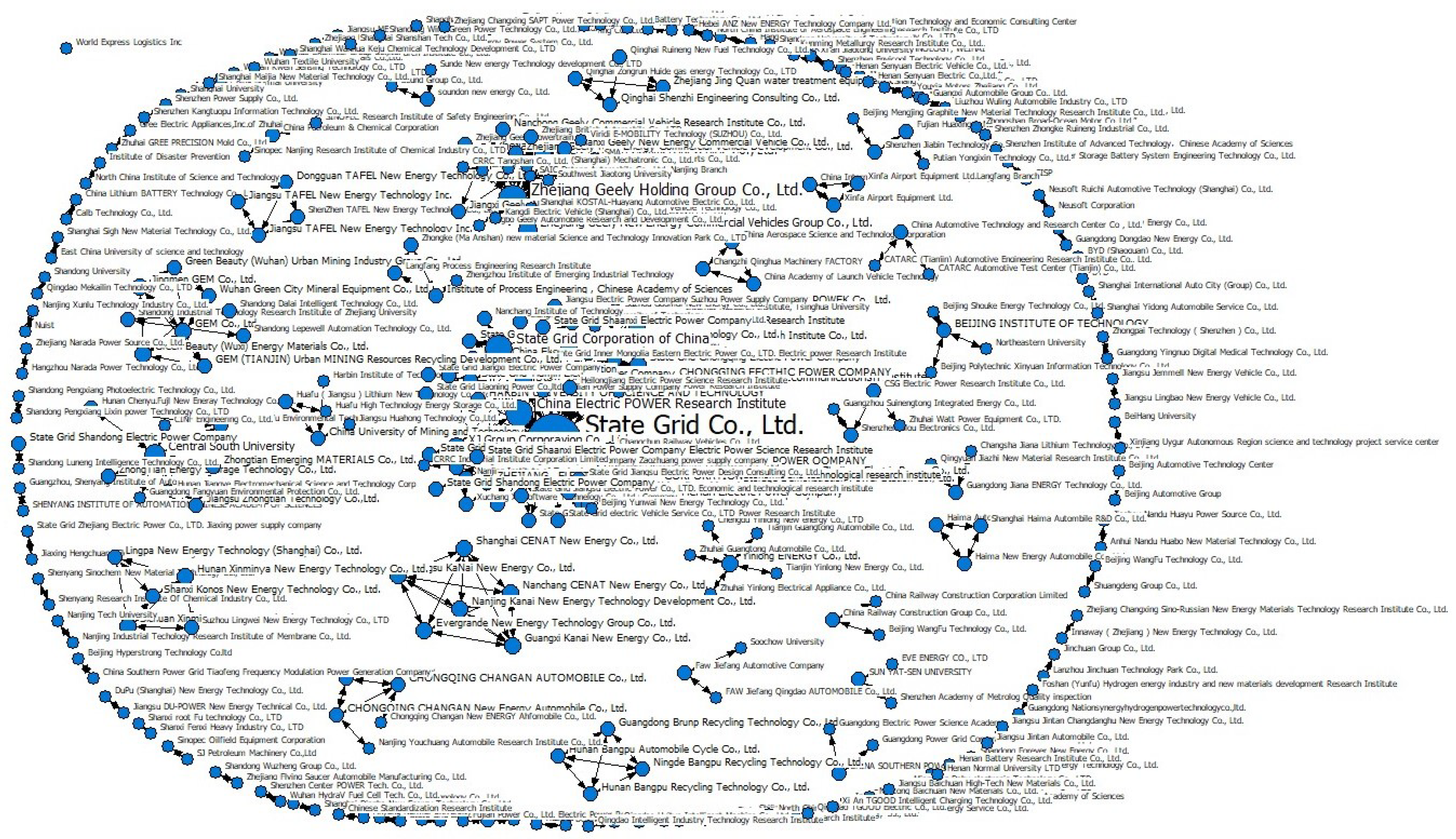
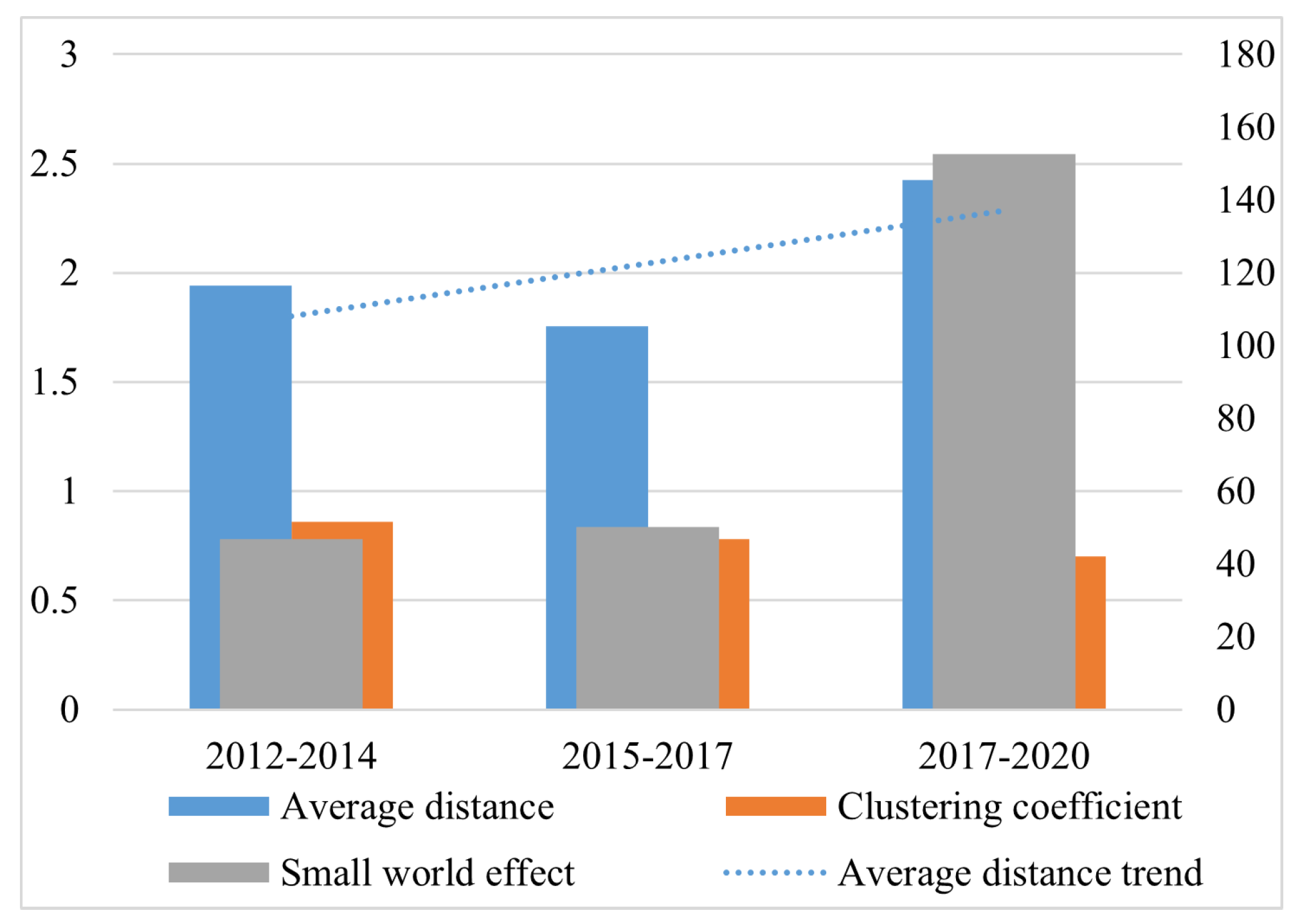
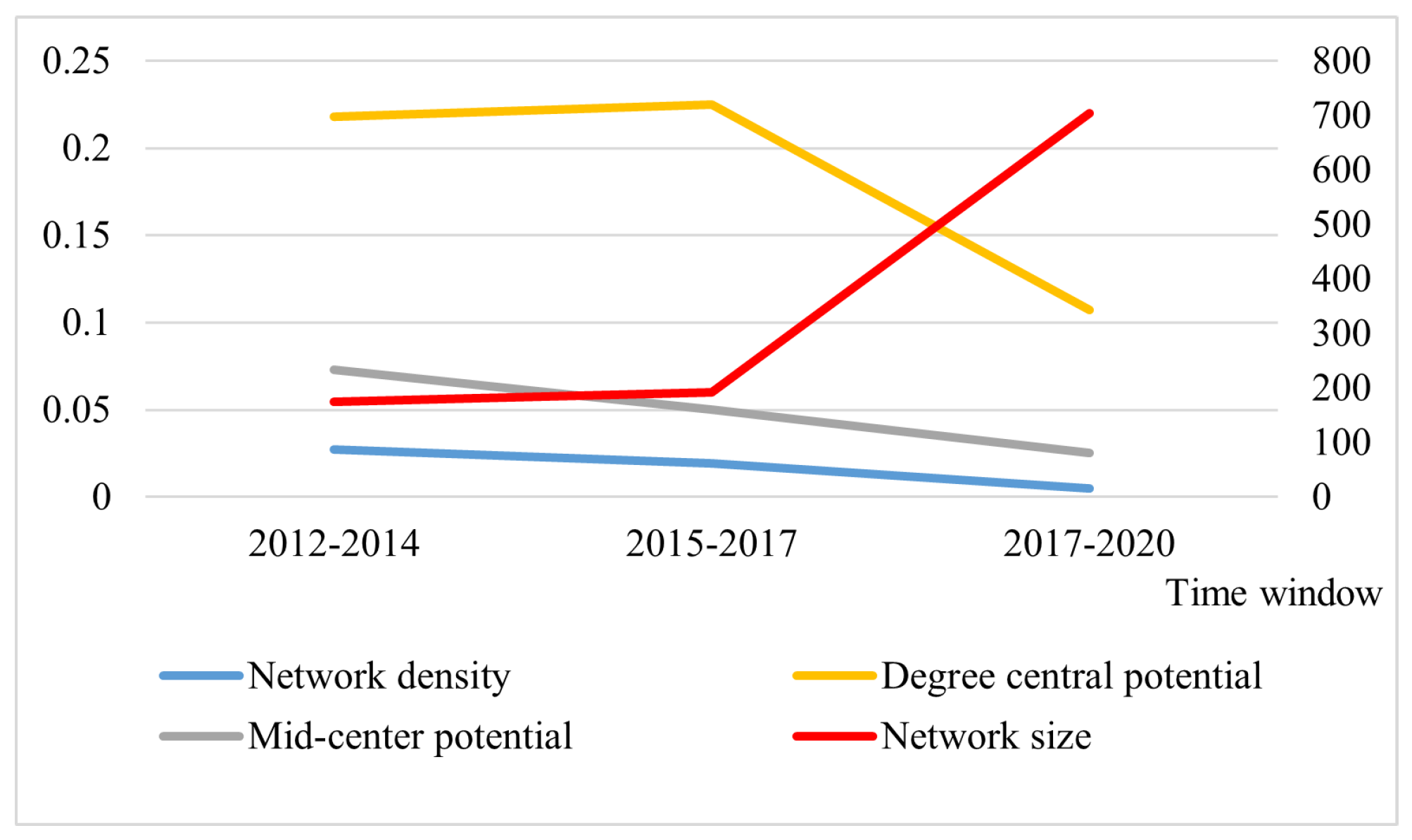


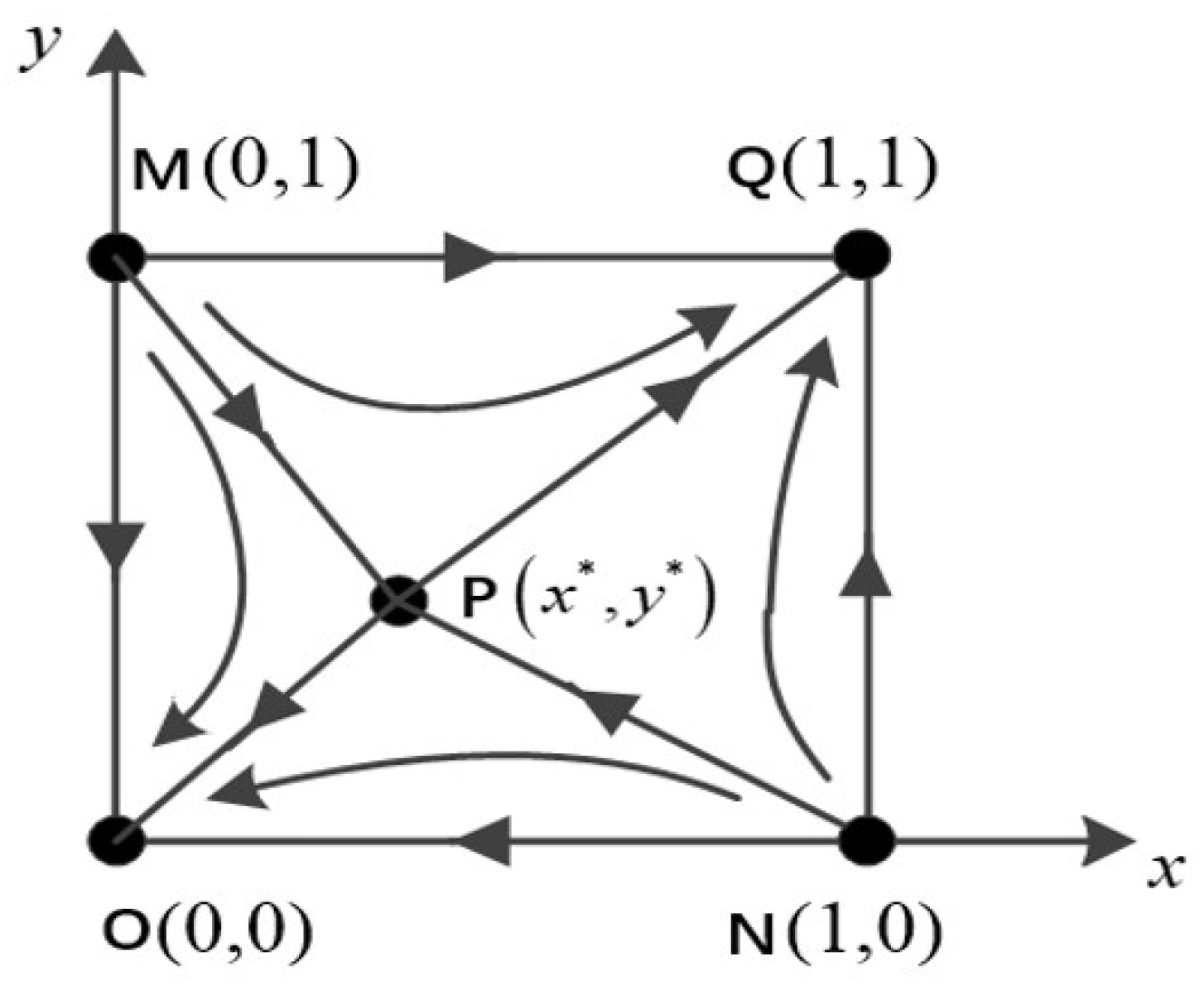
| Rank | Institution | Degree Centrality | Middle Centrality | Network Size | Network Restriction |
|---|---|---|---|---|---|
| 1 | State Grid Corporation, Beijing, China | 19 | 231.5 | 18.263 | 0.1 |
| 2 | Zhejiang Geely Holding Group Co., Ltd., Hangzhou, China | 8 | 12 | 4 | 0.385 |
| 3 | Xu Ji Group Co., Ltd., Xuchang, China | 6 | 37.5 | 3.333 | 0.517 |
| 4 | Zhejiang Geely Luoyou Engine Co., Ltd., Ningbo, China | 6 | 0 | 1 | 0.56 |
| 5 | Jinan Geely Auto Parts Co., Ltd., Jinan, China | 6 | 0 | 1 | 0.56 |
| 6 | Hunan Luoyou Engine Parts Co., Ltd., Xiangtan, China | 6 | 0 | 1 | 0.56 |
| 7 | Shandong Geely Transmission Co., Ltd., Jining, China | 6 | 0 | 1 | 0.56 |
| 8 | Ningbo Shangzhongxia Automatic Transmission Co., Ltd., Ningbo, China | 6 | 0 | 1 | 0.56 |
| 9 | Hunan Jisheng International Power Transmission System Co., Ltd., Xiangtan, China | 6 | 0 | 1 | 0.56 |
| Battery Recyclers | |||
|---|---|---|---|
| Cooperation | Non-Cooperation | ||
| EV | Cooperation | ||
| Manufacturer | Non-Cooperation | ||
| Equilibrium Point | ||
|---|---|---|
| (0,0) | ||
| (0,1) | ||
| (1,0) | ||
| (1,1) | ||
| Equilibrium Point | Local Stability | ||
|---|---|---|---|
| (0,0) | + | − | ESS |
| (0,1) | + | + | Unstable |
| (1,0) | + | + | Unstable |
| (1,1) | + | − | ESS |
| + | 0 | Saddle point |
Disclaimer/Publisher’s Note: The statements, opinions and data contained in all publications are solely those of the individual author(s) and contributor(s) and not of MDPI and/or the editor(s). MDPI and/or the editor(s) disclaim responsibility for any injury to people or property resulting from any ideas, methods, instructions or products referred to in the content. |
© 2023 by the authors. Licensee MDPI, Basel, Switzerland. This article is an open access article distributed under the terms and conditions of the Creative Commons Attribution (CC BY) license (https://creativecommons.org/licenses/by/4.0/).
Share and Cite
Yao, S.; Wu, L.; Yu, D. Synergy between Electric Vehicle Manufacturers and Battery Recyclers through Technology and Innovation: A Game Theory Approach. Sustainability 2023, 15, 13726. https://doi.org/10.3390/su151813726
Yao S, Wu L, Yu D. Synergy between Electric Vehicle Manufacturers and Battery Recyclers through Technology and Innovation: A Game Theory Approach. Sustainability. 2023; 15(18):13726. https://doi.org/10.3390/su151813726
Chicago/Turabian StyleYao, Shuang, Leke Wu, and Donghua Yu. 2023. "Synergy between Electric Vehicle Manufacturers and Battery Recyclers through Technology and Innovation: A Game Theory Approach" Sustainability 15, no. 18: 13726. https://doi.org/10.3390/su151813726
APA StyleYao, S., Wu, L., & Yu, D. (2023). Synergy between Electric Vehicle Manufacturers and Battery Recyclers through Technology and Innovation: A Game Theory Approach. Sustainability, 15(18), 13726. https://doi.org/10.3390/su151813726






